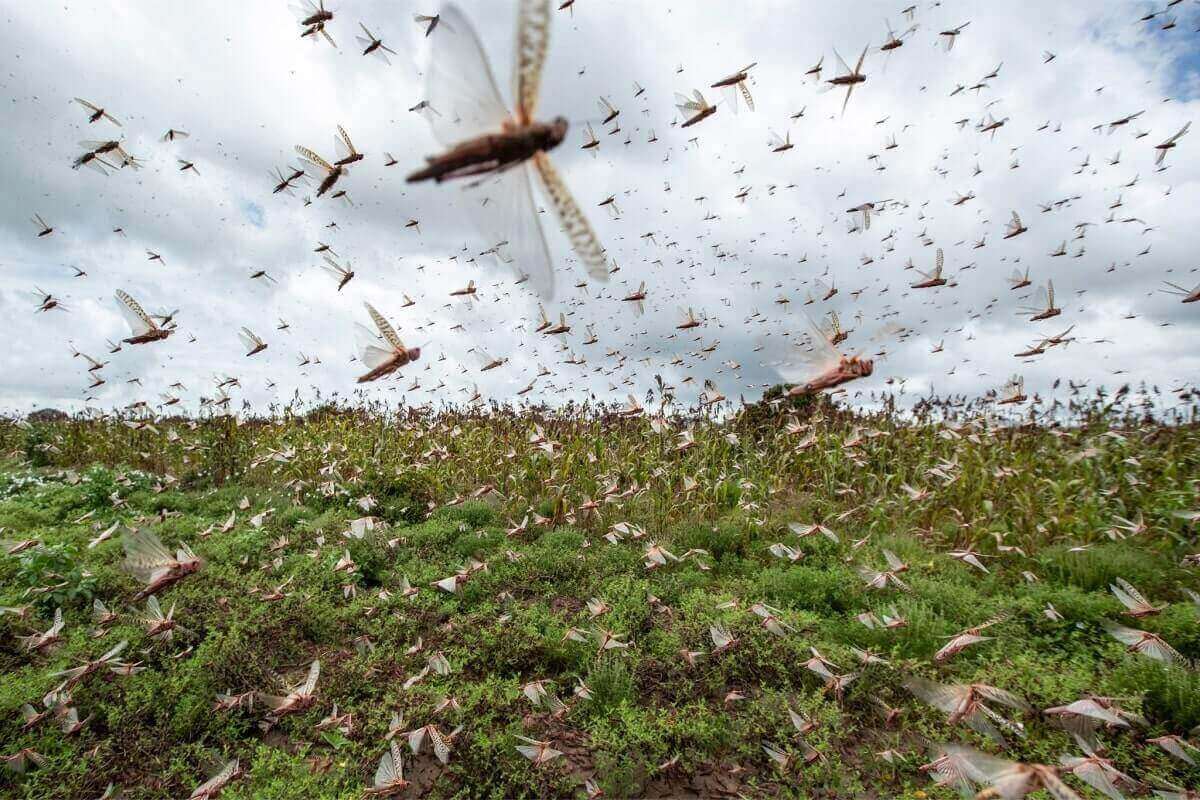
In this critical situation when whole world is struggling with the fatal coronavirus, the most serious and unexpected outbreak of locusts in 25 years is spreading across East Africa. Locusts got into India after traveling from Africa through Iran, and Pakistan.
The Times of India reported on Monday that Uttar Pradesh is the third state after Rajasthan and Madhya Pradesh which have been affected by these crop-eating pests. Authorities fear that the pests have affected crops in 17 districts of the state including Agra, Aligarh, Bulandshahr, Etah, Kanpur, and Mathura.
Experts warn if authorities fail to control the fast-spreading swarms by June when monsoon rains spur rice, cane, corn, cotton, and soybean sowing then it would damage all these crops. Several states such as Rajasthan, Punjab, Haryana, Uttar Pradesh, and Madhya Pradesh are facing the worst locust attack. As per agro experts, this is the most severe locust attack in nearly 27 years which is a menace for rice crops in India.
Before go ahead here all you need to know about some important information about locusts:
| Common name: | locusts |
|---|---|
| Type: | Invertebrates |
| Diet: | Herbivore |
| Group name: | Swarm |
| Average life span: | several months |
| Size: | 0.5 to 3 inch |
| Weight: | 0.07 ounces |
What are Desert Locusts?
Desert locusts are considered as the most destructive migratory pest in the world, one single swarm covering a kilometer radius can have as many as eight crore locusts. It looks like a common grasshopper. Having two big hind legs with which they can hop like grasshoppers. In dry spells, they come together in a huge mass, which can destroy massive vegetation within days.
How much food locusts eat?
Related to a grasshopper, theses insects form enormous swarms whose enormous appetite can finish off the food stocks growing in the crop fields of similar areas in less than an hour. They can feed almost all types of crops; a large swarm can eat as much food as about 35,000 people in one day.
It is also found that Locusts breed rapidly, with a single female desert locust laying 60-80 locusts eggs thrice during its 90-day life cycle. With such aggressive growth, they can hold up to 40-80 million one square kilometer of land. They also travel great distances, covering up to 150 km daily.
Impact on the agricultural economy
Experts say the chances of locusts attack can increase if global warming increases at a high rate. Rising temperature can diminish rain, which means more dry spells and more locust swarms. This massive attack of locusts swarm on rice crops can lead to a phenomenon called Locust Plague. The farmers are worried that the insects will wipe out their rice crops and moong beans crops, which resulting in a huge financial blow on them. The locust attack swarms can double-hit on the agricultural economy which is already suffering from the coronavirus pandemic.
How to prevent the crops from locusts swarm invasion?
In Rajasthan and Madhya Pradesh and other parts of the country where locusts attacked, farmers are using tactics such as beating steel utensils during afternoons and evenings, playing loud music at night. Besides these they are creating wood-fire and running the tractor inside their fields, to scare away the notorious swarms of locusts. To repel the locusts, Governments in these states have been readying the vehicles to spray the chemicals on crop fields. Drones, tractors, and cars have been ready to spray the pesticide to kill the locusts. But the locusts have already destroyed nearly 50,000 hectares (125,000 acres) of cropland.
Final thought
In spite of these efforts, there is no quick-fix solution to the locust menace. Beyond chemicals, pesticides, and drones, it is important to tackle the root cause of global warming and invest in upgrading climate resilience and adaptation techniques. An expensive and complex process, this will require global cooperation and coordination. But it has to be done.






